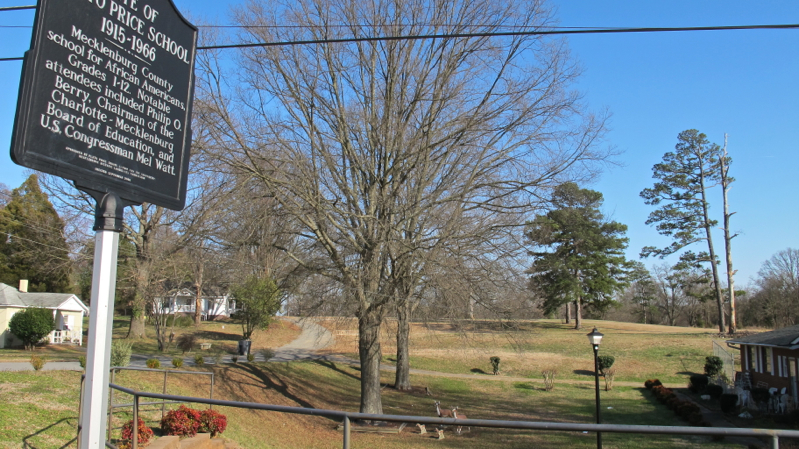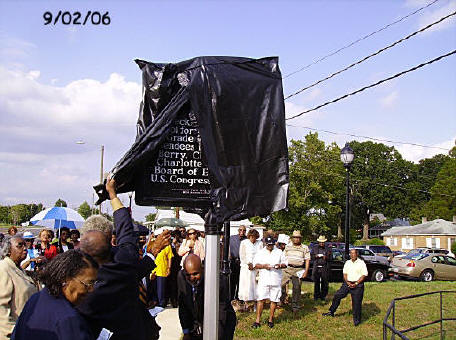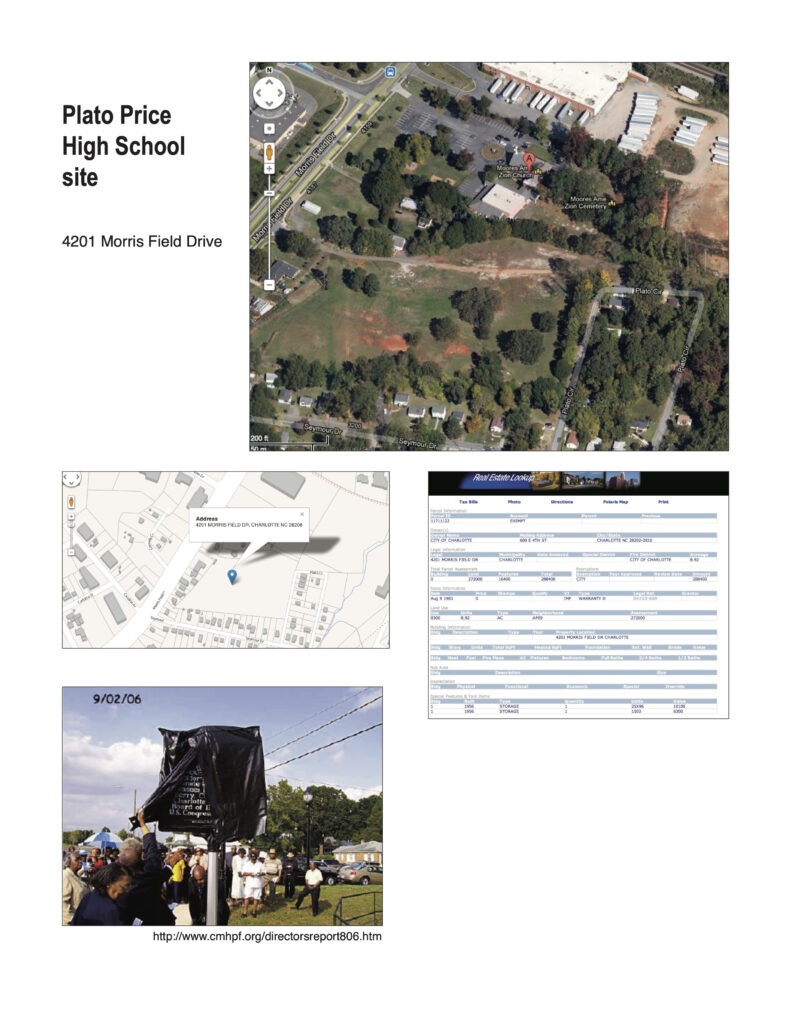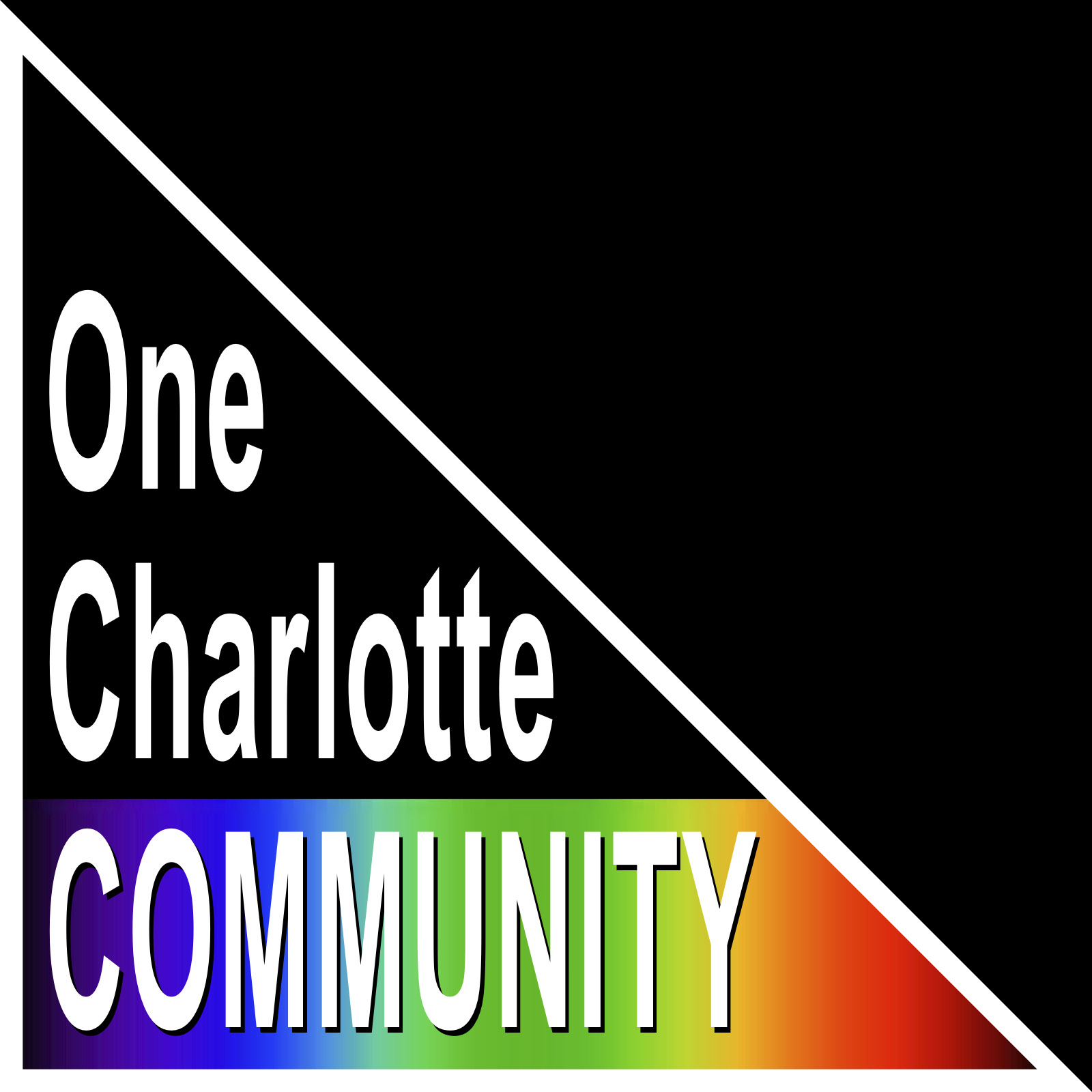
March 8, 2013
This school is on the tour of sites that illuminate community leadership strategies because of a young student bus driver who used the threat of a work stoppage to call into question the school system’s bypassing black schools in favor of white schools when new school buses were to be parceled out to the drivers.
The student’s name was Mel Watt, who as an adult went on to serve in the U.S. Congress from the 12th District. He told the story of the boycott threat to C-SPAN in 2005. An excerpt:
“So, and I led in my junior or senior year, I led what was threatened to be a boycott of black school bus drivers, because we knew that some new buses were coming into the system, and we wanted one of the new buses. So, we basically threatened not to drive. We would just strike, basically.
“And finally, they gave us one of those brand-new buses. And, of course, they punished me. They said, you know, we’re not going to let you drive it. I said, fine. You know, this is not about me driving it. They gave it to somebody else to drive, but that was fine.”
Read a longer excerpt of Watt’s comments about Plato Price here.
As mentioned in Watt’s interview, the school closed in the 1960s as the CMS school board desegregated schools mostly by closing black schools and busing those black students to formerly all-white schools. Around 1980 the school’s auditorium in the center of the school was used as the district depository of used books, while classrooms were used for other storage.
Plato Price opened opportunities to many African Americans. For students unable to reach Second Ward High, it afforded access to a post-primary education. Many of its students, Mel Watt among them, were bused sometimes many miles past segregated white schools. A number of Plato Price graduating classes have active reunion committees and a presence on Facebook and classmates.com.
But the school’s history illuminates an era of separate-and-unequal education in Charlotte-Mecklenburg.
One example: It wasn’t until 1961, more than 40 years after children went to school on the site, that CMS petitioned to hook the school up to sewers.
The site is on what was once called Dixie Road but is now in the 4200 block of Morris Field Drive near the airport. Aerial photos and real estate maps mark the spot, and illuminate the references on the Moore’s Sanctuary AME Zion church website to the neighboring school and its importance to members of the church, which has been in the same location since the 1870s. A school building has been on the site since 1915.
In its report focused on Torrence-Lyttle School in north Mecklenburg, the Charlotte-Mecklenburg Historic Landmarks Commission wrote this:

“The North Carolina Legislature passed legislation in 1913 that enabled counties to issue bonds to build high schools for African American children. It was not until 1923 that the City of Charlotte opened its first high school for African American children, Second Ward High School.
“In 1936 Mecklenburg County approved the construction of four rural high schools for African-American children: Pineville Colored High School, Plato Price High School (West Mecklenburg County), J.H. Gunn High School (East Mecklenburg County), and the Huntersville Colored School.” (http://www.cmhpf.org/TorrenceLytleRFP.htm)
According to an “historical overview” of Rosenwald schools in Mecklenburg County written by Thomas W. Hanchett, the Plato Price building that Mel Watt attended was built in 1937. Hanchett says about the four schools:
“The one-story brick buildings were built too late to receive Rosenwald construction money, but their architecture showed the program’s lasting influence. In each structure, classrooms lined a main hallway and at Pineville an auditorium projected to the rear, designs modeled closely on floor plans #60 and #7 published in S.I. Smith’s 1924 Community School Plans.”
The City of Charlotte took ownership of the school site in 1983, and demolished the school sometime during the 1980s. The land was used by a contractor for some years, but more recently has been vacant.
In 2011, more than 40 years after Plato Price School closed, Habitat for Humanity petitioned for ownership of the site to build more than 80 Habitat houses. On March 7, 2013, the land remained unused and undisturbed.

